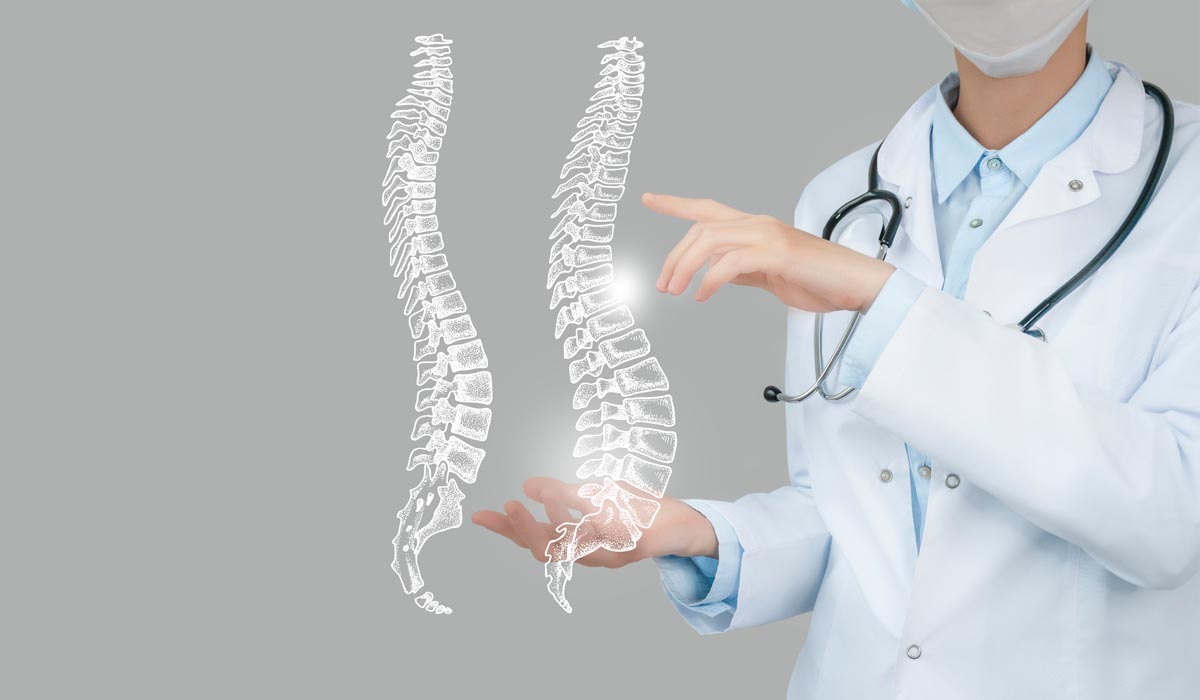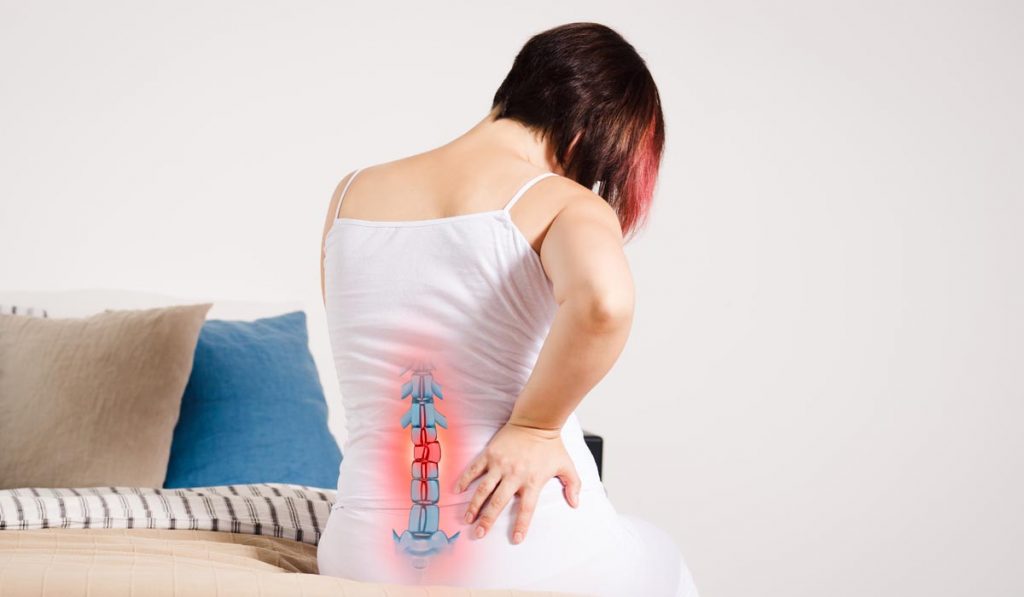Degenerative Disc Disease of Spine
Degenerative Disc Disease (DDD) is one of the most common causes of lower back and neck pain. However, most time, it either goes undiagnosed or misunderstood. DDD occurs due to the wear and tear of cushioning in your spinal disc. Though the condition is most common with older adults, a significant number of younger adults also experience DDD. Apart from low chronic pain, people may also feel weakness, numbness, and shooting pain in the arms or legs. The pain can oscillate from low-level chronic pain to severe pain.
What is Degenerative Disc Disease?
As the name explains, degenerative disc disease occurs when your spinal disks wear down gradually. Spinal disks are rubbery cushion-like shock absorbers between your vertebrae bones in your spinal column. They help you move, bend, twist comfortably by keeping your back flexible. As you age, the spinal disc goes through a slow degeneration process. As the cushioning wears down, the bones of the spine may rub against each other, giving rise to pain and other issues.
Even though it is called a disease, it is not really one, but simple age-related wear and tear. If managed correctly, a person may not experience long-term disability. A person may have to undergo corrective surgery in some extreme cases, but most cases can be easily managed using non-surgical treatment methods.
What are the Causes of Degenerative Disc Disorder?
As mentioned, wearing down of the spinal disc is a natural process as you age. Most people experience some level of disc degeneration. However, only a few people experience the pain—approximately 5% of adults. The pain generally stems from the following conditions:
- Dry out: The soft core of the disc mostly contains inflammatory proteins that may leak out due to spinal degeneration. The inflammation causes swelling in surrounding areas of the spine, producing further muscle tension, muscle spasms, and local tenderness.
- Abnormal Tear and Cracks: Apart from age-related damage, cushioning of the spinal disc decreases due to degeneration of the disc’s outer layer (annular fibrosis), which leads to abnormal motions in the vertebrae. Even the slightest of motions can cause severe irritation and tension in adjoining muscles, nerve roots. Sometimes the outer wall cracks open, and the disk may bulge out of place, causing a herniated disc. All these conditions progressively make a disc more unstable, causing episodes of intense pain.
Who might get degenerative disc disease?
Older adults are more likely to get degenerative disc disease. However, certain factors may increase your risk.
- Acute injuries by accident
- Obesity
- Pregnancy
- Smoking
- Working a physically demanding job
DDD is more common in women than men. Biological responses to pregnancy, childbirth, and menopause are the primary reasons behind it.
Symptoms of Degenerative Disc Disease
Apart from chronic pain, some patients may experience a range of symptoms. Some of the most common ones are:
- Muscle Tension or Muscle Spasm: It is one of the most common effects of spinal instability. Some patients do not experience chronic pain but muscle spasm, which can be extremely painful and temporarily devastating.
- Radiating pain: The patient may feel sharp shooting and stabbing pain that radiates from the lower back to buttocks, hips, and upper thighs.
- Inability to perform specific tasks: Patients with DDD struggle to hold certain positions like sitting or standing for a long period. Some may feel shooting pain from bending down, twisting back, and picking heavy objects.
The amount of baseline pain is quite variable among individuals. It can range from no pain at all to minor discomfort to severe disabling pain. However, severe pains are relatively rare; it is advisable to consult a chiropractor before DDD reaches its severe form.

Chiropractic Treatments for Degenerative Disc Disease
Anyone suffering from any type of degenerative disc disease and experiencing a significant amount of pain is advised to undergo non-invasive treatment first. The surgical options are extremely complicated, and it is advised only if the patient feels no relief from non-invasive chiropractic care.
Chiropractor adjustments aim to improve joint mechanics by improving spinal motion and reducing inflammation. If your condition has not reached an advanced stage, the chiropractor may also help improve the function of the intervertebral discs. The cornerstone of chiropractic care involves spinal manipulation, also known as spinal adjustment. Apart from spinal manipulation, chiropractors also combine other therapies such as manual therapy, electric way, and ultrasound.
Your chiropractor may design a comprehensive treatment plan including techniques listed below:
- Specific spinal manipulation: The chiropractors identify the joints that are restricted and depicting unnatural motion. Then they apply a controlled, sudden force (thrust) to the specific joint. The technique help regains movement in the lower back area, and the patient experiences a significant amount of relief.
- Flexion-distraction technique: The technique is mainly used for a herniated disc or spinal stenosis. In place of thrust, the chiropractor uses gentle pressure during the treatment process.
- Instrument-assisted manipulation: Instead of hands, the chiropractor uses a hand-held instrument and applies gentle force directly into the spine.
- Manual therapies: In combination with spinal manipulation chiropractor uses other manual therapies such as:
- Trigger point therapy: The chiropractor puts direct pressure on painful points to relieve tension.
- Manual joint stretching: Stretching and resistance techniques are used to strengthen the muscles and provide some relief from pain.
- Therapeutic Massage: Massage at regular intervals help reduce muscle tension and increase blood circulation, which aids in reducing inflammation and pain.
- Instrument-assisted soft tissue therapy: It is a specialized form of massage done by a hand-held device. The technique helps the practitioner to identify areas of restriction.
- Electrical stimulation: A low-frequency electrical current is applied on the lower back that helps stimulate your muscles to reduce inflammation.
- Ultrasound: Ultrasound creates a gentle heat that enhances blood circulation in the area. The focused ultrasound technique goes deep into muscle tissues without damaging surrounding normal tissues.
The chiropractor may also advise therapeutic exercises, which expedite your recovery process. The exercises reinforce the treatments mentioned above. In the case of DDD, prevention is the key. The exercises can prevent the disc from further degeneration. It may also help in reducing the symptoms from getting severe and uncontrollable.
Selfcare
A patient suffering from degenerative disc may practice self-management techniques to reduce pain and further damage. The best practice is to change your positions frequently and avoid being seated or standing in a particular position for a prolonged period. You can also sit in or lie in certain positions that help reduce pain. Chiropractors recommend sitting in a reclining position or lying down with a pillow under the knee gives right curvature to your spine.
Why 7DMC?
Our chiropractors work dedicatedly to treat your degenerative disc and provide a solution to all your symptoms. Several of our patients have found significant relief from getting treated at our pain management clinic in Dubai. We aim at treating the person, not the symptoms. The comprehensive and customized treatment plan typically consists of spinal manipulation, manual therapies, nutritional guidance, managing stress, and making changes in your lifestyle to live a pain-free life.
Our chiropractic clinic is equipped with the latest radiology and treatment equipment. Our chiropractors are experienced in handling different patients with ranging complexity and medical condition. Book an appointment if you are experiencing any of the symptoms of degenerative disc disease. Let our chiropractors examine you and guide you on the right recovery path.
While there may be no cure yet for DDD, there are methods to manage the symptoms and prevent the damage. A chiropractor can be instrumental in managing your pain by helping with realignment, regeneration, repair of vertebrae and discs. The treatment for DDD is focused on whole-body healing and does not include pills or injections. So, do not wait and let the degeneration get worse. Seek help for your back pain right now from our qualified and trained chiropractors.
Reference:
https://www.spine-health.com/conditions/degenerative-disc-disease/common-symptoms-degenerative-disc-disease
https://www.ncbi.nlm.nih.gov/
https://www.healthline.com/health/degenerative-disc-disease
- CATEGORIES : Chiropractic





